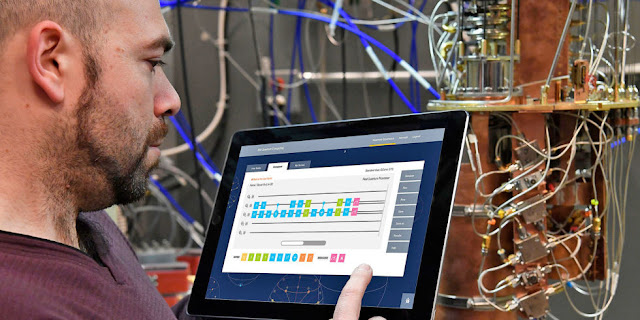Meet the world's most powerful supercomputers.

Meet the world's most powerful supercomputers..
Twice a year, a company known as the TOP500 publishes a listing of the world’s quickest supercomputers. it's a ranking of the foremost powerful machines in the world—mammoth installations with names like Sunway TaihuLight and Tianhe-2. Those area units each Chinese computers, and also the former is that the world’s quickest. the foremost recent version of the list came out on Mon, and also the high 5 supercomputers hail from China, Schweiz, Japan, and also u.s..
But whereas the ranking may be a timely UN agency’s who of strong computers—and right away, China dominates the list, with 202 of the highest 500—its publication is additionally an honest time to ask: what makes a mainframe a mainframe, and what do they are doing scientists use them for?
“A mainframe may be a giant machine designed to focus its power on one drawback,” says Bill Gropp, UN agency runs the National Center for Supercomputing Applications at the University of Illinois, home to a machine known as Blue Waters. In alternative words, an outsized server farm could be powering your Gmail expertise or streaming your Netflix, however, its computing power is targeted on several individual tasks, not one, complicated one.
And significantly, supercomputers area unit meant to handle issues that may be softened into smaller items—but pieces that don’t stay in isolation. “Those items need to communicate with their neighbours,” Gropp says.
To image what one sounds like, imagine refrigerator-sized cupboards that pack layers of parts, like processors, in them. huge ones will take up thousands of sq. feet.
The top supercomputers area unit hierarchic employing a metric known as flops, that stands for floating purpose operations per second—a activity of how briskly it will do science equations. The Sunway TaihuLight machine topped out at ninety-three petaflops, that is ninety-three quadrillion flops. The quickest U.S. machine on the list is termed Titan, and it clocks out at over seventeen petaflops. (Just don’t confuse them with belly flops, that area unit all completely different and far less helpful.)
Think about the quality of the natural world—the means molecules move, a tornado form, or the trail a cyclone takes. Simulating that digitally takes lots of computing power.
Steve Scott, the chief technology officer at Cray Inc—which makes supercomputers—says that the powerful machines play a task within the scientific method. “Basically what computers do is simulating the flora and fauna,” he says.
For example: think about HIV. That virus is wrapped in one thing known as a capsid, that is comprised of one,300 proteins. to higher understand the interaction between the capsid and also the cell the virus enters, Juan genus Perilla, associate professor of chemistry and organic chemistry at the University of Delaware, used 2 supercomputers to run a simulation. one amongst those was Titan, at Oak Ridge National Laboratory. Another was Blue Waters, in Illinois.
The simulation made most data—almost a hundred terabytes—they required Blue Waters once more simply to crunch it.
He laughs once asked if it had been one thing they might have avoided a mainframe. “It would have taken a few lifetimes,” he says. “We’re learning nature at a really high resolution, atom by atom.”
Just like the interaction between a scourge and a cell is sophisticated, this may be a tornado forming from a supercell electrical storm, a development that additionally took a mainframe to simulate. And weather centres just like the European Centre for Medium-Range Weather Forecasts deem supercomputers to create predicting the weather potential, too.
The nuclear possibility
Besides modelling natural phenomena, supercomputers power alternative exploits, like working out however an unclean bomb, or a W.M.D., would disperse its harmful components in a very town. “That’s really a really computationally tight drawback,” says Scott, of Cray.
“The nuclear stockpile is maintained via simulation,” he adds. “It’s one amongst the foremost tight issues and one amongst the large drivers within the U.S. government circles for funding high-end computing.”
Look for an associate updated version of the list—that ranking of the machines across the globe that drive science, industrial analysis, and national security—to be revealed in the Gregorian calendar month of next year.


Comments
Post a Comment